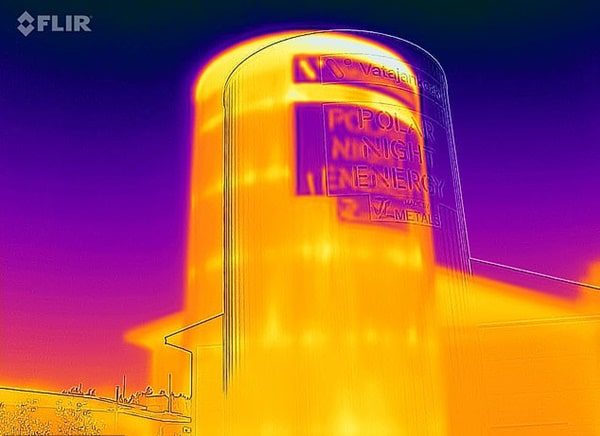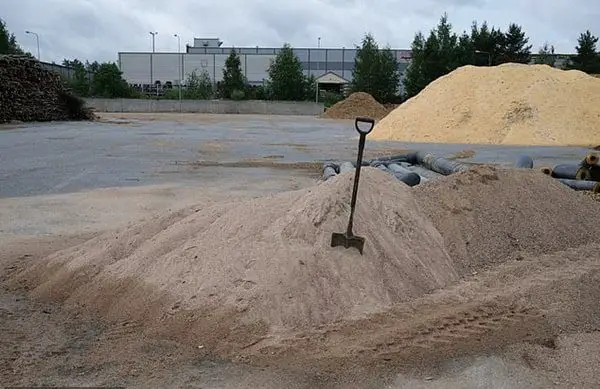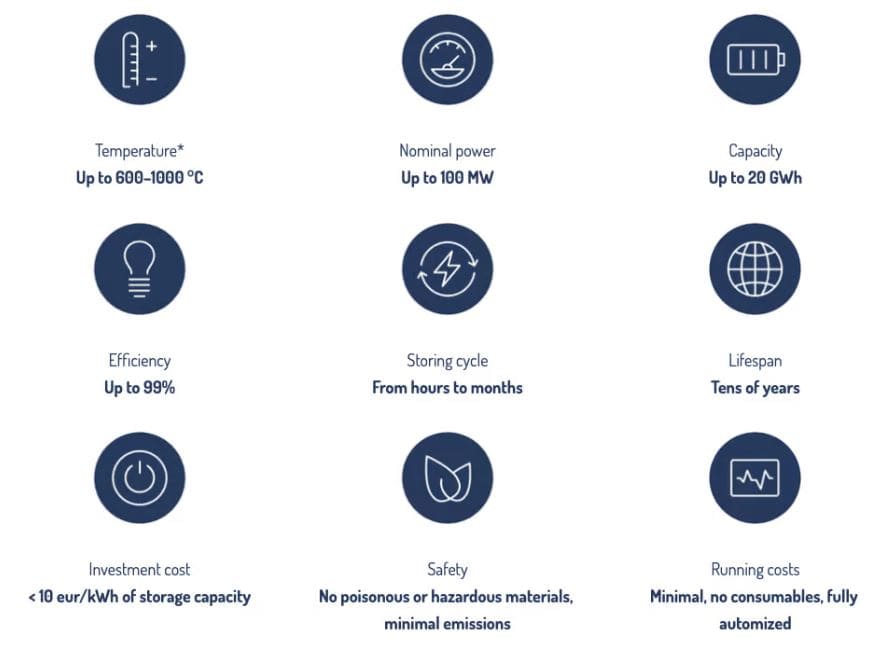A ‘sand battery’ that stores electricity generated from renewable energy sources such as solar and wind power for several months at a time was developed in Finland and started operating the world’s first commercial power plant.
The sand battery heats water circulating in local buildings with thermal energy generated by putting sand with heat storage capacity in a silo and heating it to about 500°C. The researchers came up with the sand battery on the same principle that when you go to the beach on a sunny day and put your foot in the hot sand, you feel the heat.
Sand batteries are attracting attention as a new energy storage device to replace conventional batteries because they can store intermittent natural energy sources such as wind and solar power.
As it can store energy in the long term, it is expected that it will be a solution to the energy supply problem throughout the year, such as providing an inexpensive heat source even in winter.
Batteries made from lithium and other earth minerals can also be used as energy storage and supply stations, but compared to the limited mineral resources and toxicity of disposal, sand batteries cannot match.

The Polar Night Energy sand battery silo holds about 100 tonnes of sand, which rises up to 500°C.
Photo = Polar Night Energy
A team of Finnish engineers has installed the world’s first fully functional ‘sand battery’ that can store and use renewable energy as a heat source for up to several months at a time.
Built by The Polar Night Energy, the plant consists of tall silos that hold about 100 tonnes of sand. The sand battery plant, built in Kankanpae, Finland, has a sand temperature of 500°C, a calorific value of 100kW, a power generation capacity of up to 8 megawatts (MW), and an efficiency of up to 99%.
As with conventional energy storage systems, when excess power beyond need is generated through renewable resources, it is stored in sand batteries. Using the resistive heat of energy from solar panels and wind turbines, the sand in the silo is heated to 500°C, generating hot air, which is transferred to the sand through a heat exchanger and circulated within the silo.
This green energy is released when needed, for example when insolation is low or when energy prices are too high in winter.
Sand melts at hundreds of degrees Celsius. Therefore, sand towers have a high potential for energy storage. The sand stores this energy together for months, making it a viable long-term storage solution.
Sand battery, what are the advantages?

Sand stores four times as much heat as water. Moreover, it does not require large resources for mining, and there is no toxicity such as when disposing of lithium batteries. (Photo = Polar Night Energy)
Above all, it is eco-friendly.
Sand provides four times the energy storage capacity of water and is inexpensive and non-toxic. On the other hand, lithium-ion batteries found in cell phones, electric vehicles, and laptops are depleted, causing future toxic waste disasters. In addition, lithium mining uses a wide range of resources.
Sand battery energy storage systems use only resistive heat. In other words, electricity from a renewable energy source in the system passes through a heating element, vibrating and heating the particles inside, creating hot air. In addition to being environmentally friendly, sand batteries are attractive in that they can be stored for a long time because electricity supplied from renewable resources is intermittent.
Once heat is generated in a sand battery silo, it can be stored in a gigantic silo for several months.
Researchers claim that sand batteries could solve the problem of a year-round supply of renewable energy to heat buildings and could eventually be used to generate electricity. This means that intermittent energy generated when sunlight and wind are weak can be stored here to compensate for the supply-demand imbalance in power generation.
“The transition to green energy has a huge impact on usable electricity, resulting in a mismatch between production and consumption,” said Maku Ilonen, co-founder of Polar Night Energy. The discrepancy can be large at times. We could have tens of GW of unused electricity. Our thermal batteries can provide low-cost storage for the vast amounts of energy stored as heat at high temperatures, and can be kept in useful form for industrial, district heating or future power generation. The biggest benefit is the scalability it can provide for storage. Tens of GWh of energy can be stored in the system for a long period of time without significant performance degradation at a reasonable cost.”
Finnish winters can last up to 200 days and drop as low as minus 45°C, so creating a reliable heat source is essential for residents. Finland’s recent accession to the North Atlantic Treaty Organization (NATO) means that Russia’s main electricity supplier has stopped supplying gas and electricity to the country.

Finland benefits 35,000 people from sand battery heating
aturally, the next question is whether the technology is scalable, and through the founding of their company, Polarite Energy, researchers have attempted to answer that question.
The company’s two former engineer founders, funded by the Energy Commission, installed batteries at the Vatajankoski power plant in Kankaanpää, which is connected to a district heating network. The Polarite energy plant was built earlier this year and started operation in May of this year.
When electricity demand is high but supply is low, these sand batteries can exhaust hot air into a heat exchanger, where it can heat water. The heated water is then pumped up to provide heating to the buildings of 35,000 local residents.
“We can supply about 200 kW of heating power to the waterway leading to the village of Kankanpae,” said Iyonen. “Hot water from the reservoir mixes with the mains, providing some of the heat needed to keep the town warm,” he explains.
However, he said, “this ratio varies according to the time of year because the heating load of the district heating network is highly dependent on the ambient temperature.”
- Location: Kankaanpää, Finland
- Sand temperature: 932°F (500°C)
- Efficiency: Up to 99 per cent
- Storing cycle: From hours to months
- Heating power: 100 kW
- Capacity: Up to 8 MWh

